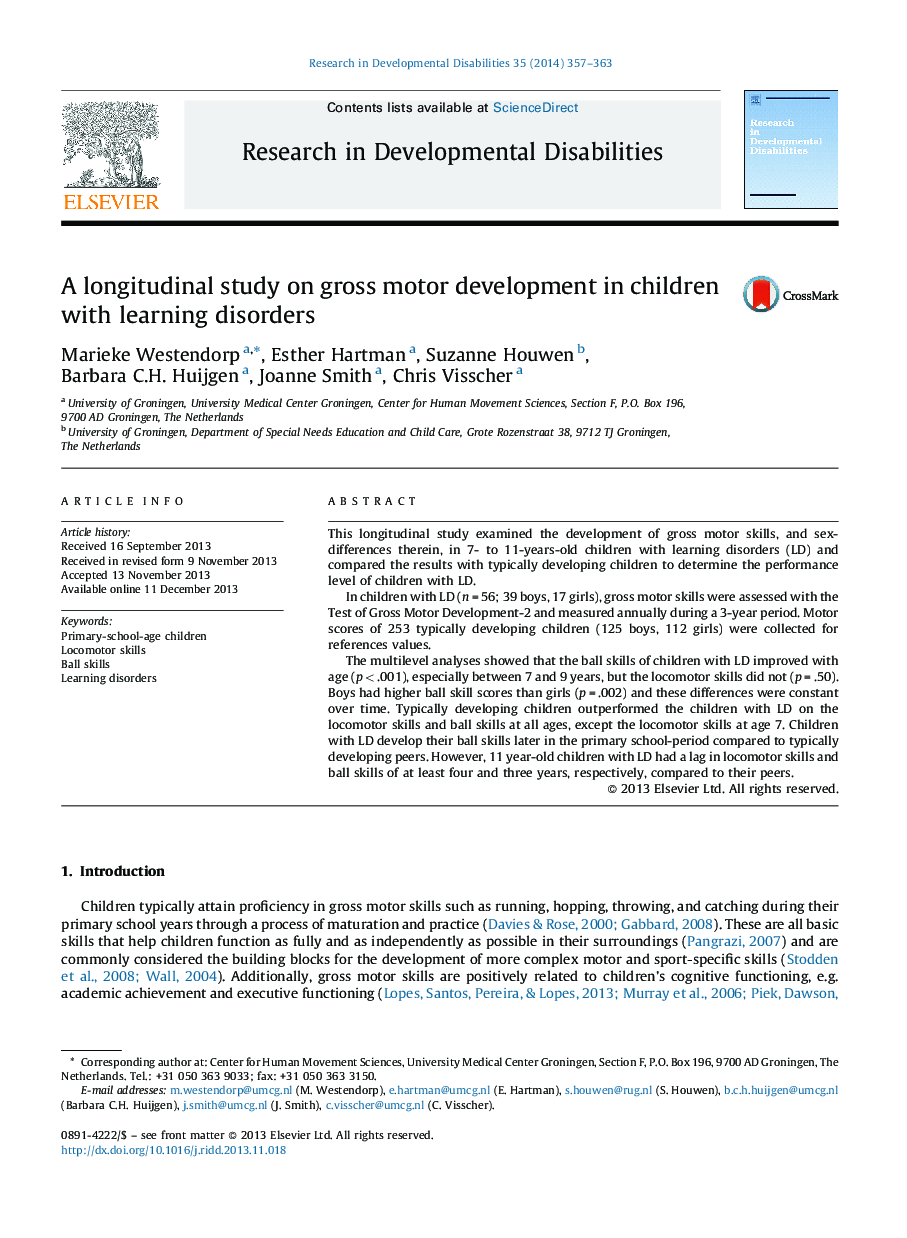| کد مقاله | کد نشریه | سال انتشار | مقاله انگلیسی | نسخه تمام متن |
|---|---|---|---|---|
| 371417 | 621923 | 2014 | 7 صفحه PDF | دانلود رایگان |
• Children with learning disorders develop their ball skills between 7- and 11-years old.
• The largest improvement was found between 7 and 9 years old.
• Locomotor skills did not improve with ages.
• Boys had higher ball skill scores than girls; these differences were constant over time.
• There is a gap between children with LD and typically developing peers at all ages.
This longitudinal study examined the development of gross motor skills, and sex-differences therein, in 7- to 11-years-old children with learning disorders (LD) and compared the results with typically developing children to determine the performance level of children with LD.In children with LD (n = 56; 39 boys, 17 girls), gross motor skills were assessed with the Test of Gross Motor Development-2 and measured annually during a 3-year period. Motor scores of 253 typically developing children (125 boys, 112 girls) were collected for references values.The multilevel analyses showed that the ball skills of children with LD improved with age (p < .001), especially between 7 and 9 years, but the locomotor skills did not (p = .50). Boys had higher ball skill scores than girls (p = .002) and these differences were constant over time. Typically developing children outperformed the children with LD on the locomotor skills and ball skills at all ages, except the locomotor skills at age 7. Children with LD develop their ball skills later in the primary school-period compared to typically developing peers. However, 11 year-old children with LD had a lag in locomotor skills and ball skills of at least four and three years, respectively, compared to their peers.
Journal: Research in Developmental Disabilities - Volume 35, Issue 2, February 2014, Pages 357–363
